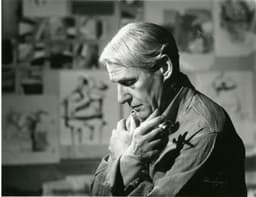
Willem de Kooning
@willem-de-kooning
Willem de Kooning: Abstract Expressionism's Dynamic Force
Willem de Kooning stands as one of the most influential artists of the twentieth century, fundamentally reshaping modern art through his revolutionary approach to abstraction and gestural painting. Born in Rotterdam, Netherlands, in 1904, de Kooning immigrated to the United States in 1926, eventually becoming a cornerstone of the Abstract Expressionist movement that emerged from post-war New York.
De Kooning pioneered action painting, a technique emphasizing the artist's physical gesture and emotional spontaneity on canvas. His dynamic brushwork and bold color combinations created compositions that vibrated with energy and psychological intensity. Unlike some abstract artists who completely abandoned figuration, de Kooning provocatively merged abstraction with fragmented human forms, particularly in his famous "Women" series created during the late 1940s and 1950s. These works, featuring aggressive, gestural depictions of female figures, sparked both controversy and acclaim, challenging viewers to reconsider representation in modern art.
His iconic paintings, including "Woman I" and "Excavation," demonstrate his mastery of layered composition and his ability to balance chaos with compositional harmony. De Kooning's technique of constantly revising and reworking his canvases reflected his belief that art should express raw human emotion rather than predetermined concepts.
Throughout his career, de Kooning influenced countless artists and helped establish American art's global prominence during the Cold War era. His integration of European modernism with American directness created a distinctive visual language that transcended geographical boundaries.
De Kooning continued painting prolifically until his death in 1997, maintaining his artistic vitality well into his final years. His legacy endures as a testament to the power of gestural abstraction, emotional authenticity, and artistic courage, securing his position as an essential figure in modern art history.